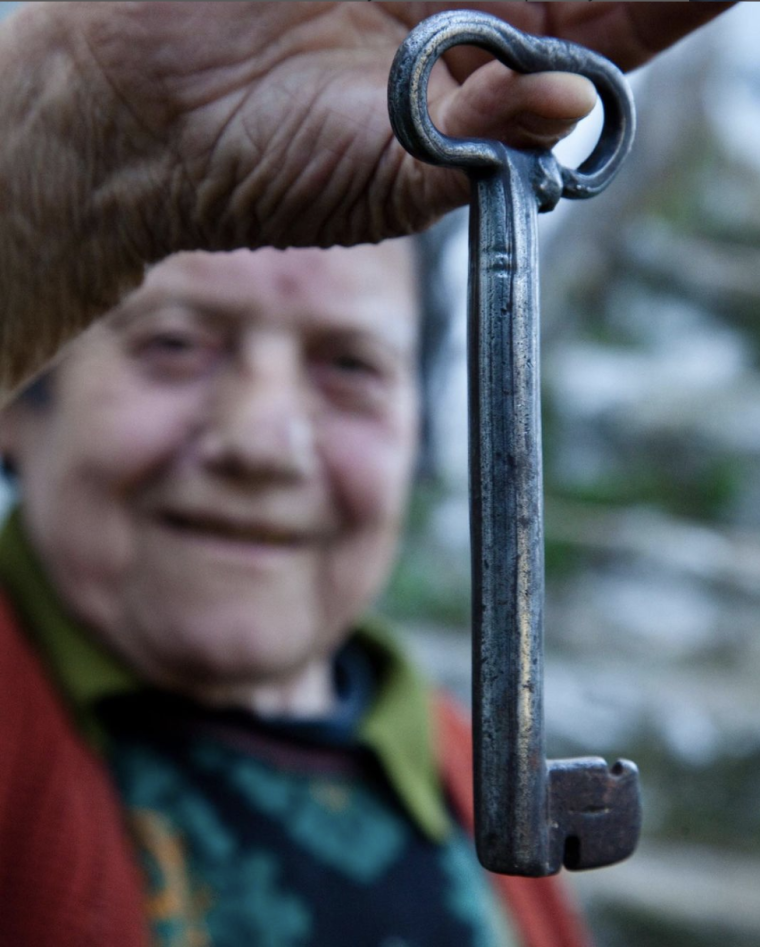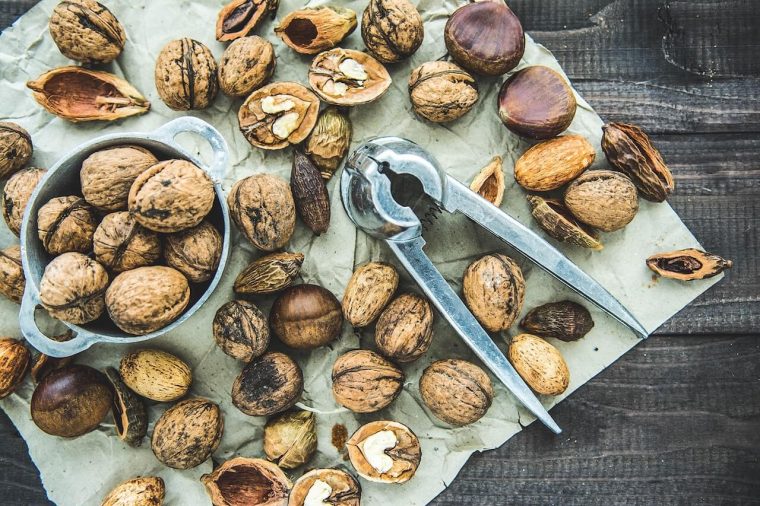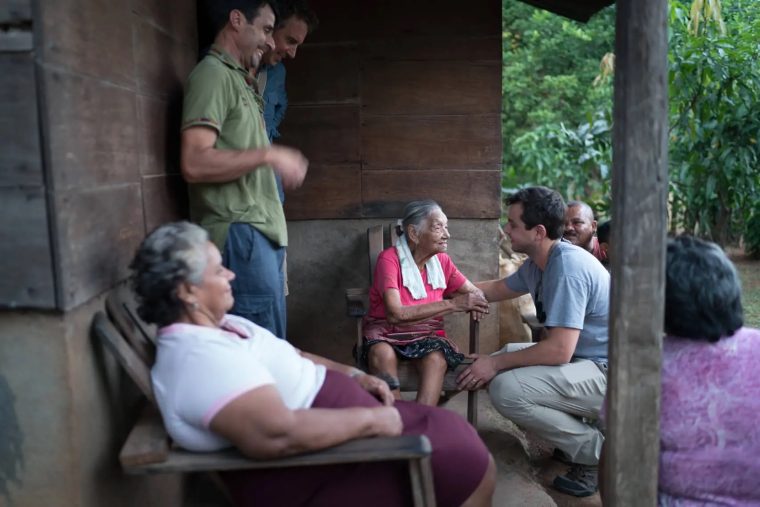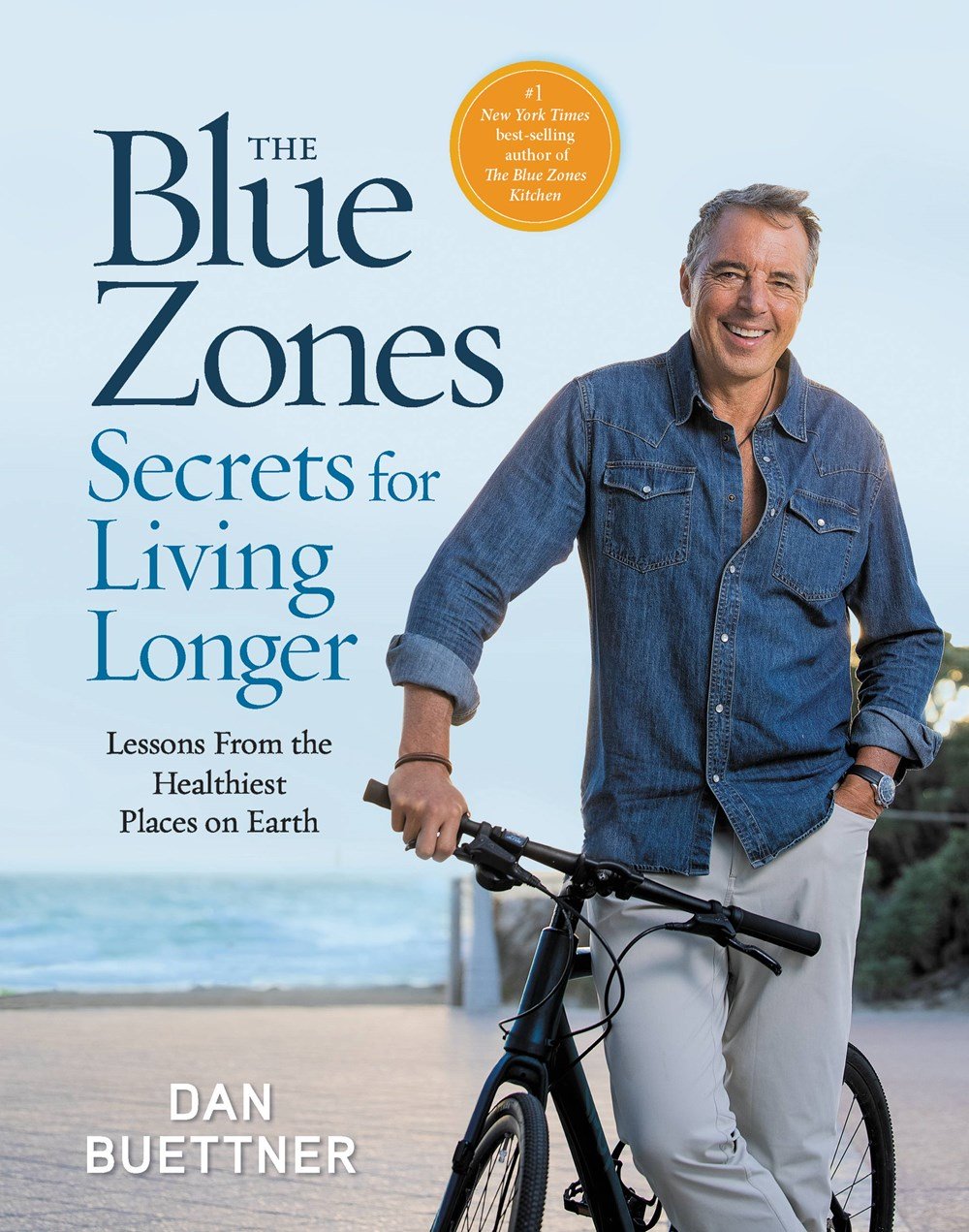Like a lot of writers, I typically write introductions last, after the main body of writing is done. It’s often easier once you can see clearly where everything is going.
I wrote the two main pieces of this newsletter first, so I had time to reflect on those articles before writing this introduction. Then I had a small epiphany—the kind that’s useful for leading into a discussion—and I thought “huzzah!” because this is usually the moment when the final pieces click together.
Here’s the problem: I realized that my “epiphany” will probably make you roll your eyes (not my favorite reader reaction) and yet, by now, I’m not sure how else to start this newsletter.
So let’s just steer into it and see what happens…

Basically, I realized that Forrest Gump (the character) and health experts (like nutritionists and personal trainers) annoy people in the same fundamental ways. Even if you can safely assume that they’re good people whose hearts are in the right place, their very existence—more specifically, their seemingly impossible combination of traits—confronts us with a number of implications that we don’t want to consider about ourselves.
Leaving aside the fact that Forrest Gump is a fictional character, and not a terribly realistic one, let’s consider the two essential things we all know about him: he’s pure of heart, and he’s slow of mind (IQ of about 75). The longer you think about that pair of details, the more maddening it becomes; his story seems to imply a tug-of-war between intelligence and integrity, and if that were true, it would be horribly depressing for the rest of us.
Picture an average American comparing themselves to Forrest Gump OR comparing themselves to a shredded personal trainer. Either way, I can imagine that person drawing one of three conclusions, and none of them sound especially good:
- Forrest and the trainer represent impossible ideals. In other words, you think you’ll never be as “good” as them by whatever definition because you don’t have the “X-factor” that makes it possible. Forrest Gump’s X-factor is being a fictional character, and your trainer’s X-factor (you might imagine) is their genes, or in-utero Olympic training, or something else you just don’t have.
- Forrest and the trainer represent expensive possibilities. In other words, you think you could be as “good” as them, but only at great cost which you might be unable or unwilling to pay. In the former case, you can’t lower your own IQ to the ignorance-is-bliss level in which Forrest Gump operates. In the latter case, you shudder to imagine countless painful workouts on a spartan diet of kale, tofu, and ice water; the simple truth is that you don’t want to stop enjoying your life just to possess that superhero physique, attainable though it may be.
- The “ideals” they represent really are attainable AND enjoyable… at which point you have to wonder what you’ve been doing with your life. If neither A nor B is true—if you really can have Forrest’s decency without being dumb, or your trainer’s physique without an appetite for suffering—the dilemma evaporates. And that’s great news… until we realize that we’ve just lost our best excuses for not trying to do better. If I really can have everything I want, and at a price I’m willing to pay, then why don’t I have it already? Why didn’t I start sooner?
This, I think, is the mental torture of self-improvement.
But here’s one helpful thing to notice about Forrest and maybe your trainer too: they tend to find things they enjoy (or ways to enjoy them), then they double and triple down on them. Forrest Gump is actually a great example of a principle I’ve observed in the blue zones: the best and easiest way to stay healthy is to find healthy things that you enjoy. There’s no better motivation than wanting to keep going simply because you feel like it.
In that spirit, today’s two main articles are about two of the healthiest AND most enjoyable decisions you could ever make. Let’s roll! ?

Last time in Lessons in Longevity, I shared the Latin mantra of solvitur ambulando (“it is solved by walking”) and began to think aloud about the strange power of walking—how the simple act of putting one foot in front of the other can bring us clarity, peace, and perspective.
Like before, I don’t feel much need to talk about the physical benefits of walking, which are semi-obvious and documented elsewhere. I want to stay on the psychological side of the topic—and today, I’m going a little deeper by talking specifically about the strange power of walking with other people.
If you’ve followed me for any length of time, you’ve probably seen me use the Japanese word moai (“MO-eye”) at some point. In simple terms, a moai is a group of people who look out for one another; it’s a social circle that doubles as a safety net.
In Okinawa, moais of roughly five children are formed at a young age and, over time, a child’s moai becomes a second family for life. Some moais are still going strong 90+ years after their original formation, and they’re one of the big reasons that Okinawans are among the longest-lived people in the world. (Way back when, moais even went so far as pooling resources for community banking and insurance.)
The word moai originally means “meeting for a common purpose,” so it makes natural sense that a walking moai is a group whose common purpose is, well, walking. Where such groups have popped up in America, it’s usually a workday-wellness kind of program where anyone from a certain area (like, say, Fort Worth) is welcome to join. A lot of participants do come to appreciate the walks themselves—for instance, for helping to reduce their blood pressure—but alas, the more formal a moai’s origins, the likelier it is to formally disband after a set period of time.
If that sounds like bad news, this is exactly where the magic of a moai begins.
The delightful trick of the term walking moai is that, over time, its meaning shifts from “moai founded for walking” to “group of friends currently walking together.” It turns out that walking is one of Nature’s oldest and most reliable ways of making friends out of us—and as I’ve discussed before, friends are a lot of what’s missing from the big picture of our health nowadays.
The remainder of my task here is simple, yet also slightly daunting: I’ll try to explain why walking with other people is able to work the social and psychological magic that it does. I can’t put my finger on one unifying reason, but I can point to a number of little reasons working together and I’ll name five of them:
LEVEL PLAYING FIELD ⚖️ Walking is one of the world’s most democratic activities. Disabilities notwithstanding, it’s something most every human figures out by themselves during infancy—and only a silly (or really mean) person would ever say that a fellow pedestrian is particularly “bad” or “good” at walking. Walking just is what it is, and it’s useful that we don’t think too hard about it.
PRIMACY OF ACTIVITY ? Even if it’s only (say) 5-10% of your brain’s bandwidth, walking does require continuous effort and attention in much the same way that long-distance driving does—and the overall effect is that the other 90-95% of your brain gets calmer and quieter.
Something about the mindless, natural activity of walking keeps us occupied and makes it easier to be patient and let conversations unfold naturally. You have something to occupy your attention during any lulls and pauses—and on that note, a moai (especially a small one) is the rare kind of social group where you might find the lovely harmony of people who can comfortably share silence.
REDUCED CONVERSATIONAL PRESSURE ?? Walking relaxes some of our conversational standards in ways that make it easier for all parties involved. Three specific examples:
- Eye Contact. Everyone’s eyes are forward when walking, and for an obvious practical reason: you want to watch where you’re going. You can still look over at people, but there’s no need to manage eye contact like there would be if you were sitting across a table from one another.
- Pauses and Interruptions. Again, you have a bodily activity occupying your attention during the lulls, so they don’t hang heavy in the air like they would in a face-to-face conversation.
- Small Talk. If I’m in an elevator with a stranger and they make some crack about the weather, a little part of me dies inside. But if that same stranger were to say the same thing while walking with me outdoors, I wouldn’t mind it because (A) the weather is more relevant when you’re in it and (B) the inevitable conversation has to start somewhere, right?
MINDFULNESS PRACTICE ? Some of this is concrete and explicit; for instance, walking partners will call out potential hazards and help you up if you fall. Walking is everyday practice in cooperating through (minor) practical challenges.
But I like the unspoken part even more…
Notice that, when people set out to walk as a group, we naturally reach a kind of equilibrium; without discussing it, everyone winds up moving at roughly the same speed. The fact that this is obvious and unspoken is exactly what’s beautiful about it: we pay attention to others and accommodate them without any fuss because it matters to us that we stick together—even if we don’t yet know each other well.
UNSPOKEN UNDERSTANDINGS ? Some of this is just common sense; for instance, if you walk 20 minutes out, you know that it’ll take at least 20 minutes to walk back, and that’s the perfect situation to unpack the “long stories” you’d usually gloss over.
But there’s also a shared social understanding in those circumstances. Most people get that, once you’ve started walking, talking is basically the only thing left to do, so you might as well try to enjoy it. It’s easier to relax, listen attentively, and maintain your manners when you are (in the best possible way) stuck walking side by side with someone for the next half-hour.
* * * * *
It’s not a coincidence that Forrest Gump attracted a following in his three-year run crisscrossing America. Even though Forrest repeatedly explained (without elaboration) that he “just felt like running,” his followers still got the impression that he “had it all figured out” because, in a way, he did. Without even trying, Forrest helped some of those people to reach epiphanies of their own, and (eventually) he did find the peace he needed to go home.
When Forrest later told Jenny about the sublime and beautiful things he saw on foot, she said wistfully that she wished she could’ve been there with him, and Forrest simply replied: “You were.”
As the guru Ram Dash sagely summarized life itself: we are all just walking each other home. So let’s walk more together.


I want to talk about pets, but I’m aware that most people reading this will fall into two main categories:
- You already have pets and therefore don’t need my encouragement.
- You DON’T already have pets, and there’s probably a reason for that.
I’ll be honest: I personally fall into Group B, and the main reason is that I travel too much to be a good pet parent (for the kind of pet I might want). Quite frankly, I love traveling and doing what I do more than I love pets, and I know I can’t have both.
Having said that, I do still love animals, and I relish the opportunities I get to soak up love from other people’s pets. So I thought I’d talk a little more about it here today. ?
There are two main questions I want to try and answer here:
- How are pets good for us? In other words, what are the health benefits of pet ownership?
- Why are pets good for us? In other words, what traits or qualities do they possess that enable them to confer those health benefits?
One tiny disclaimer: I’m going to be talking mostly about dogs because (A) I don’t want to open the Pandora’s Box of pet options, (B) dogs are my personal favorite, and (C) research suggests that dogs boost happiness and well-being more than cats do. Still, a lot of what I’m about to say is equally true for pets other than dogs; whatever kind of pet you might love, I’ll trust you to parse through the details for yourself.
HOW ARE DOGS/PETS GOOD FOR US?
The “measurable health benefits” part is a lot more straightforward. You can get more details here and here, but to name a few of the benefits:
- Reductions in both (subjective) stress levels and (objective) cortisol levels
- Decreases in blood pressure and average heart rate
- Significant reduction of your chance of dying in any given year
- Increased sense of wellness and belonging; improved mood overall
- Positive influence on child development, particularly for neurodiverse children
- Higher levels of average physical activity, with all attendant benefits
- Increased senses of purpose and positive responsibility in life
As any dog lover will already know, you can actually feel many of these benefits (in your body) in real time. These subjective and qualitative feelings do pose a challenge for the research—clearly they do affect us, but they’re hard to measure—though this shouldn’t matter if you’re not a researcher. Just enjoy the puppy love and know that, yes, it is doing you some real and lasting good.
WHY ARE DOGS/PETS GOOD FOR US?
This is the more elusive question. Still, as with the previous article on walking moais, I’ll take my best few shots at the answer:
Unconditional Love ? It is (and should be) humbling that unconditional love is arguably the highest good to which humans can aspire—it’s the best possible way we can treat one another—and yet we’ll never be better at it than the silly domesticated wolves living in our houses. It does us good to keep them around because we are the beneficiaries and (hopefully) imitators of that unconditional love.
Need proof? Just watch any good doggo being reunited with its parent after a long time apart. They are SO UNBELIEVABLY HAPPY and you can see it (and hear it) in every fiber of their being. I don’t think I’ve ever felt better about myself than the moments when a dog is ecstatic to see me.
Dogs really are the best people.
Living in the Present ⏳ The wonderful, Zen-like thing about dogs (and virtually all members of the Animal Kingdom aside from humans) is that they are always very present in the Now. They can learn and they can remember—but unlike humans, they don’t dwell on things (much less ruminate).
Whether it’s a playful moment or a peaceful moment, the magic of pets is always in the Now. By loving our pets and spending time with them, we inadvertently learn how to be more present (at least for a few seconds) and savor the perfect moment in front of us—a skill we’d all do well to use in other parts of our lives.
Childlike Amusement ? This one doesn’t need much explanation: pets are amusing, sometimes endlessly so. They do silly things and they invite you to join in the silliness—and it’s a lot easier to indulge pets because, for once, you can be absolutely certain that your playmate won’t judge you for acting weird.
Pets are a great way to keep in healthy contact with your inner child. A dog is the perfect excuse to whip out your coddling baby voice, speak in nonsense, make weird noises, and generally abandon all dignity and propriety to enjoy a moment of your life with this playful, childlike animal.
In that spirit, a gently modified quotation from Kahlil Gibran:
“Keep me away from the wisdom which does not cry, the philosophy which does not laugh, and the greatness which does not bow before children (or dogs).”
Driving Responsibilities ? Jack London once wrote that dogs see us as their gods, and I’ve thought a lot about this idea because there seems to be some truth to it. I think it helps to clarify one of the things that feels deeply satisfying about taking good care of a pet like a dog: for once, you can control enough to make absolutely sure that someone’s god is benevolent (and present).
Pets like dogs can seem needy if you don’t want them, but they’re one of the best investments you’ll ever make if you do want them. They just need a few basic supplies, an occasional vet visit, and—most importantly—your love and attention and guidance. Having to step up to that responsibility is, for some people, the best reason they could possibly have to get out of bed in the morning.
Combined with unconditional love, this is the reason that you’ll sometimes see bumper stickers with paw prints and a slogan like “who rescued who?”
* * * * *
Lastly, and tying things back to the previous article: a dog is one of the best reasons to go out walking (and also one of the best ways to meet people along the way). Not least of all, the “pack walk” (as Cesar Millan calls it) is one of the most important ways you can bond with your dog.
Moral of today’s newsletter: walking makes everything better, in ways that you might not have imagined on your own. So get out there and start racking up steps!

Mark Bittman’s Chili Non Carne

Ingredients
1 pound dried pinto beans, washed, picked over, and soaked if you like
1 whole yellow or white onion, unpeeled, plus 1 small yellow or white onion, minced
Salt and freshly ground black pepper
1 cup vegetable broth or water
1 fresh hot chili, such as a serrano or a small jalapeño, seeded and minced, or to taste (optional)
1 teaspoon ground cumin (optional or to taste)
1 teaspoon minced fresh oregano leaves or 1⁄2 teaspoon dried oregano (optional)
1 tablespoon minced garlic
Chopped fresh cilantro for garnish
The Method
- Put the soaked beans in a large pot with water to cover and bring to a boil over high heat, skimming the foam if necessary.
- Add the whole onion. Adjust the heat so the beans bubble steadily but not violently; cover loosely. Check to be sure you do not boil away all the liquid!
- When the beans begin to soften (30 minutes to an hour, depending on the type of bean), season with salt and pepper. Continue to cook, stirring occasionally and adding water if necessary, until the beans are quite tender but still intact (about as long as it took them to begin to soften).
- Drain the beans, reserving the cooking liquid if you choose to use it.
- Discard the onion and add all the remaining ingredients except the cilantro.
- Turn the heat to medium and bring to a boil. Cover and turn the heat down to low.
- Cook, stirring occasionally and adding more liquid if necessary, until the beans are very tender and the flavors have mellowed, about 15 minutes. Taste, adjusting the seasoning if necessary.
- Dish up into serving bowls and garnish with cilantro.
TIP: For a slightly different chili taste, try this spice mixture in your beans: 2 teaspoons sweet paprika, 1 teaspoon ground ancho chili pepper, 1 teaspoon cumin, 1 teaspoon ground coriander, 1 teaspoon dried Mexican oregano.





